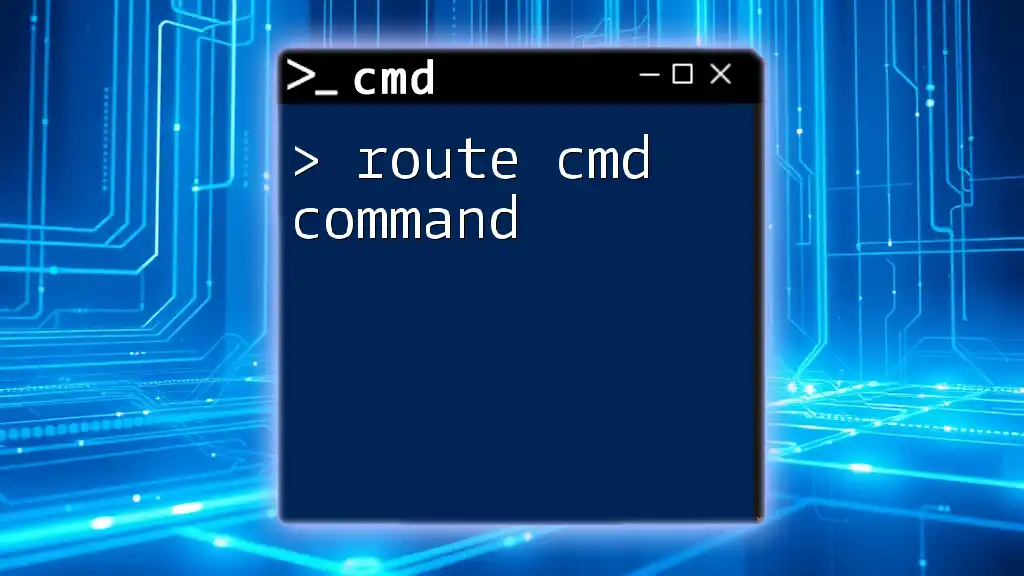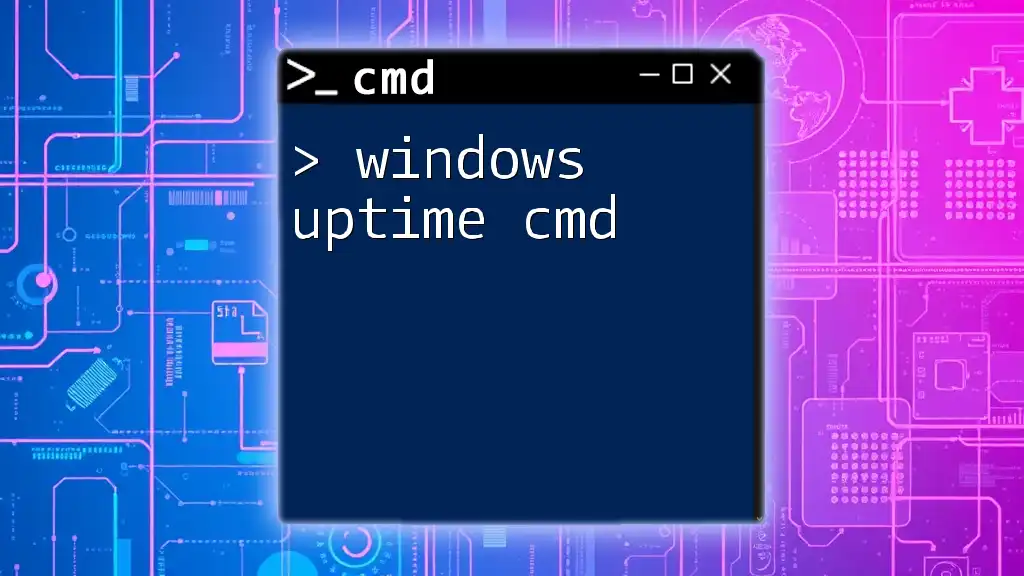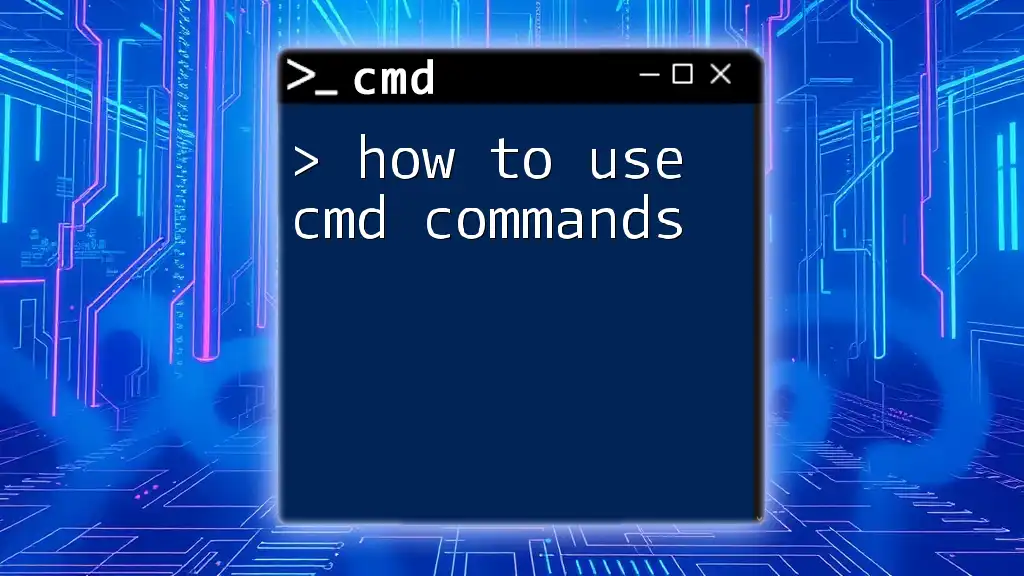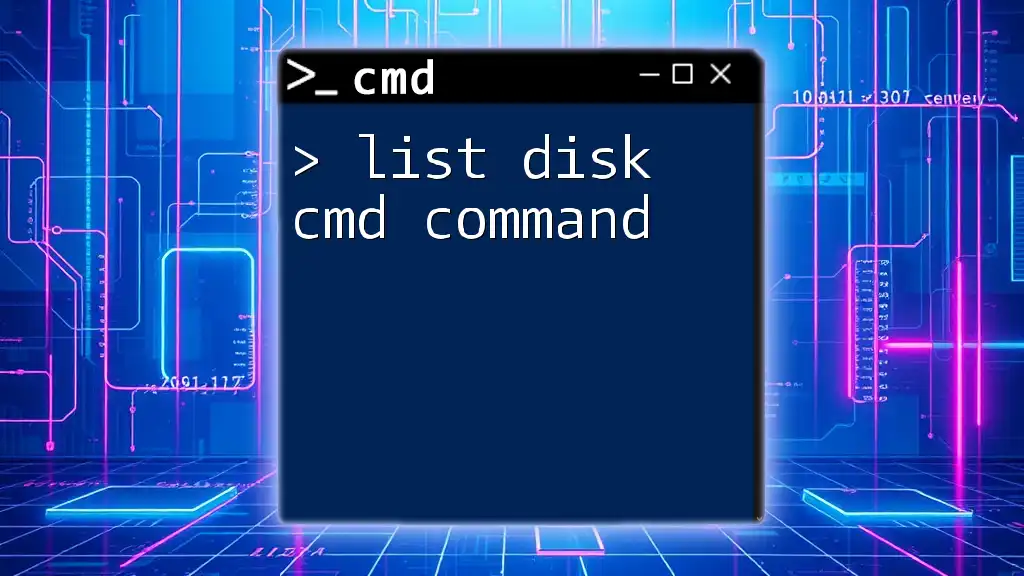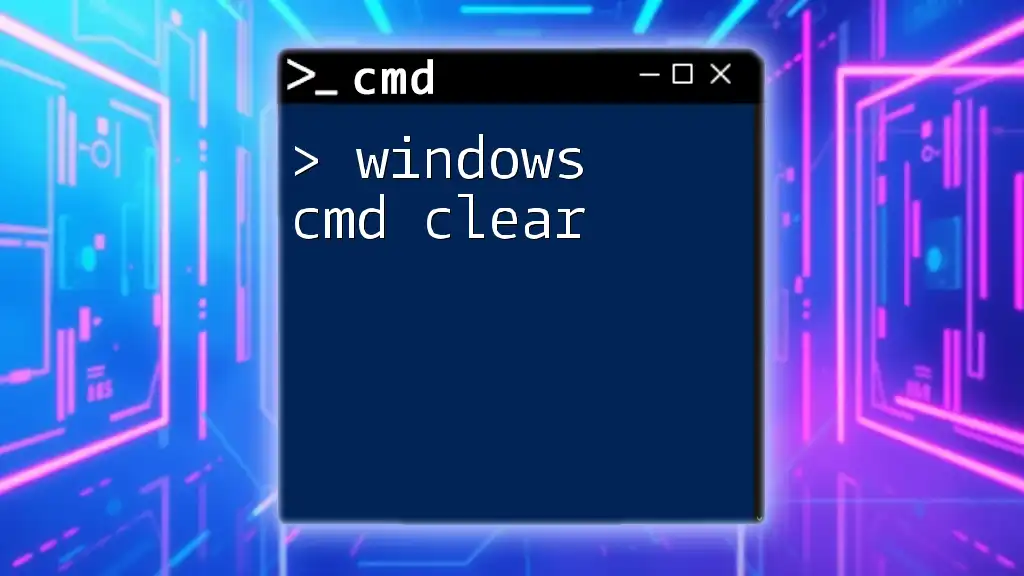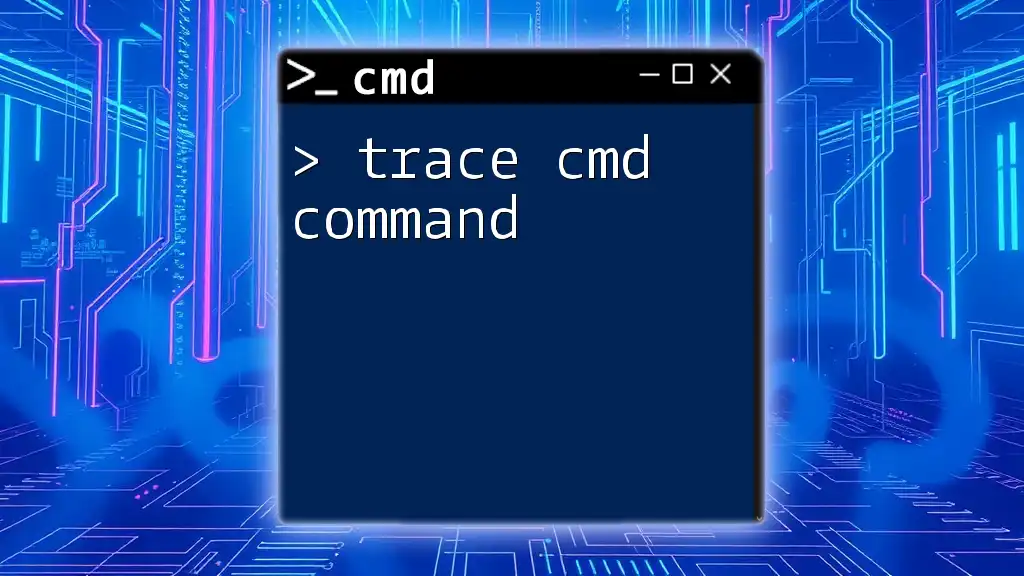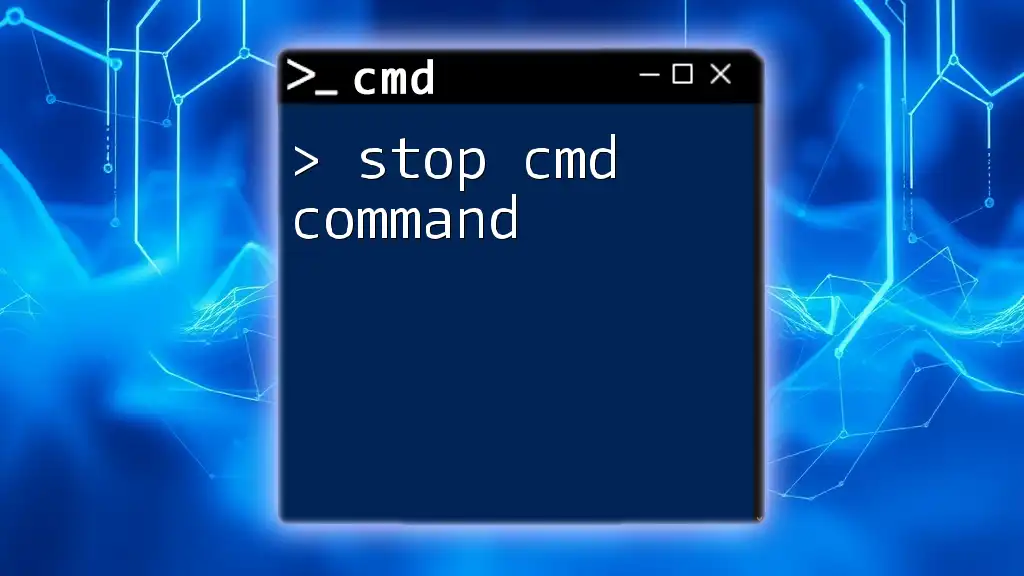The Windows App Update command can be executed in Command Prompt to update installed applications, using the Windows Management Instrumentation Command-line (WMIC) tool.
wmic product where "name='YourAppName'" call install
Understanding CMD and Its Role in Windows
What is CMD?
Command Prompt, often referred to as CMD, is a versatile command-line interpreter available in Windows operating systems. It allows users to execute commands, run scripts, and manage system tasks through a text-based interface. Unlike graphical user interfaces (GUIs), CMD provides a more direct method of interacting with the operating system, making it a powerful tool for advanced users and system administrators.
Why Use CMD for App Updates?
Using CMD for updates is advantageous for several reasons. First, it allows for automation of repetitive tasks, which can save valuable time. Second, CMD can be used for remote management, enabling IT professionals to manage systems without needing physical access. Lastly, updates via CMD can be significantly faster than using graphical methods, especially when managing multiple systems.
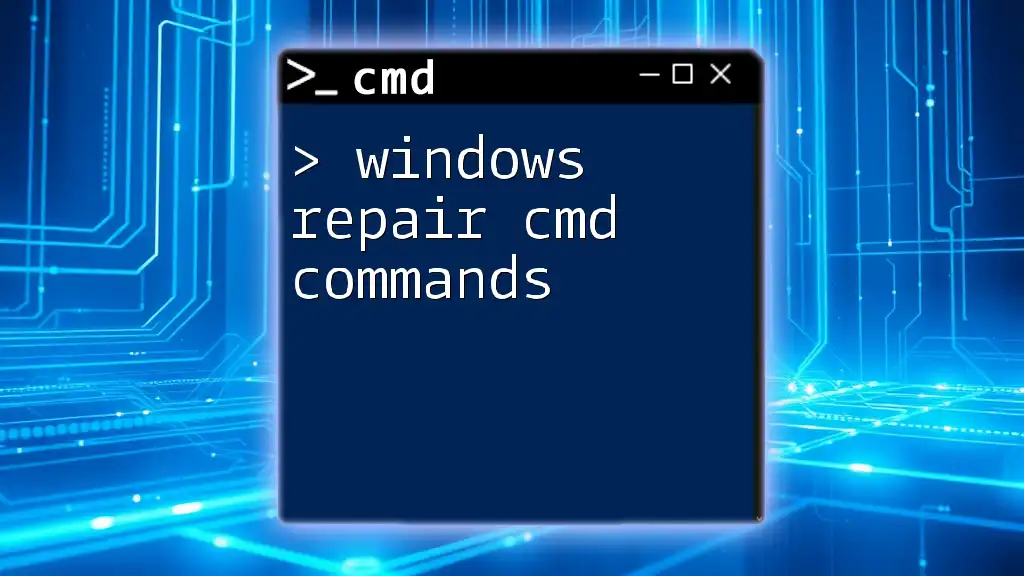
Preparing for App Updates
Checking the Current Version of Installed Apps
Before updating any applications, it’s essential to know the versions of installed software. You can do this using the following command:
wmic product get name, version
This command lists all installed applications along with their versions. Understanding the output from this command is crucial—if an app is already at its latest version, there’s no need to update it, saving time and resources.
Requirements and Permissions
To execute update commands, you need to ensure that you have the correct permissions. Often, CMD commands related to updates require elevated permissions. To open CMD as an administrator, right-click the Start button and choose "Command Prompt (Admin)". Running CMD this way allows you to bypass user account control (UAC) restrictions, thus facilitating smoother updates.

Updating Windows Apps Using CMD
Using `winget` to Update Apps
What is `winget`?
`winget`, or Windows Package Manager, is a command-line tool that simplifies the installation and management of software packages on Windows systems. It provides users with a streamlined method for searching, installing, upgrading, and removing applications.
Commands for Updating Apps
To update an application via `winget`, you can use:
winget upgrade <app_name>
Here, replace `<app_name>` with the actual name of the application you wish to update. For instance:
winget upgrade Discord
This command will search for an available update for Discord and apply it immediately.
Updating All Installed Apps
If you want to update all your installed applications at once, use the command:
winget upgrade --all
This is particularly useful for users who have several applications installed, as it allows for efficiency in ensuring everything is up-to-date in one operation.
Using `DISM` for System App Updates
What is `DISM`?
Deployment Image Servicing and Management (DISM) is another powerful tool in Windows primarily used for servicing Windows images. However, it can also facilitate updates to system apps, making it an essential component of Windows app management.
Commands for App and Feature Updates
To repair the Windows image and ensure all system files (and the associated apps) are in order, you can utilize:
DISM /Online /Cleanup-Image /RestoreHealth
This command checks for any corruption within the Windows image and attempts repairs. It's a crucial step in maintaining system integrity, especially before or after a significant app update.
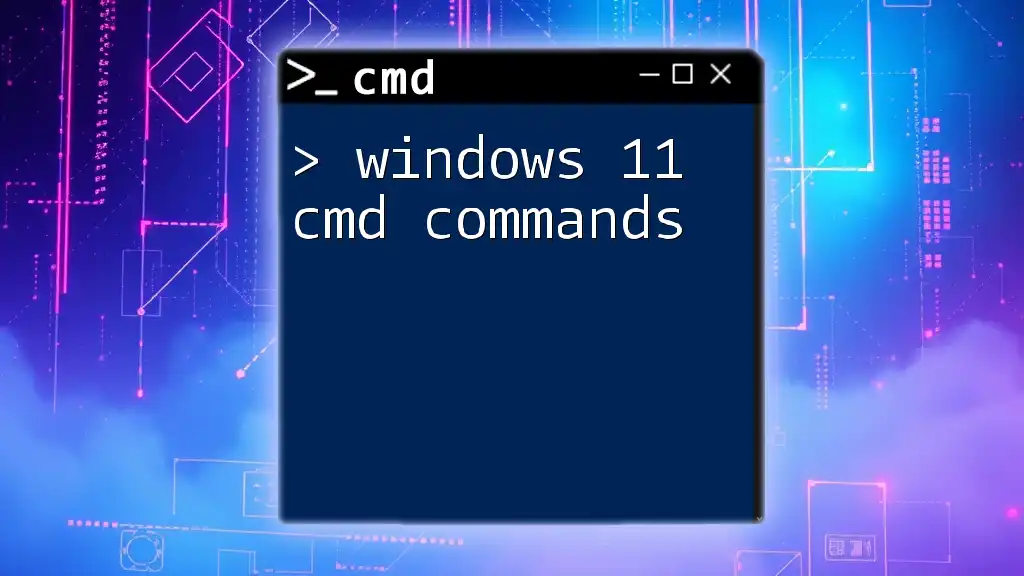
Troubleshooting Common Issues
Common Errors and Solutions
When using the windows app update cmd command, you might run into errors.
Error: "No packages found." This error may indicate that either the app you are trying to update does not exist or is already at the newest version. Double-check the application name and try again.
Error: "Access denied." This generally points to insufficient permissions. Ensure you're running CMD as an administrator and try the command again.
Ensuring Your CMD is Up-to-Date
It's equally important to ensure that your CMD environment is updated. Windows updates often bring enhancements and bug fixes that improve CMD functionality. Regularly check for system updates by navigating to Settings > Update & Security > Windows Update.
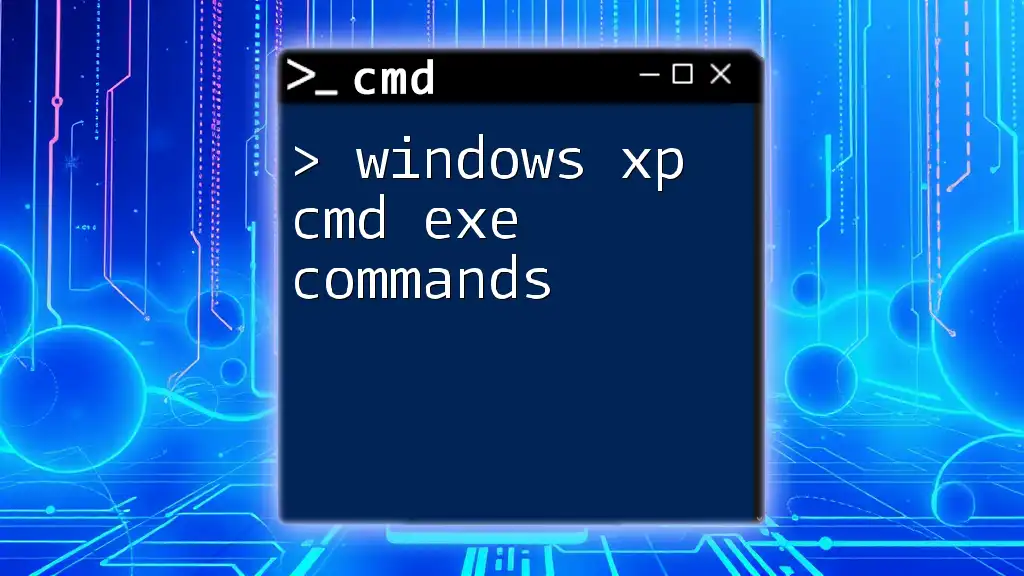
Advanced Techniques
Automating App Updates with Batch Scripting
What is Batch Scripting?
A batch script is a text file containing a sequence of commands for the Windows shell. This can be a tremendous asset for users seeking automation in their app update processes. Writing scripts can help significantly reduce manual tasks and errors.
Writing a Simple Update Script
See below for a simple batch script to automate updates for all applications:
@echo off
winget upgrade --all
pause
In this script:
- `@echo off` prevents each command from being printed in the command window.
- `winget upgrade --all` initiates the update for all installed apps.
- `pause` waits for user input before closing the window, allowing users to see the results of the command.
Scheduling App Updates
Using Task Scheduler, you can set your system to run updates at specific intervals automatically. To do this:
- Open Task Scheduler from the Start menu.
- Click on Create Basic Task.
- Follow the wizard to schedule your batch file to run daily, weekly, or monthly to keep applications updated without manual intervention.
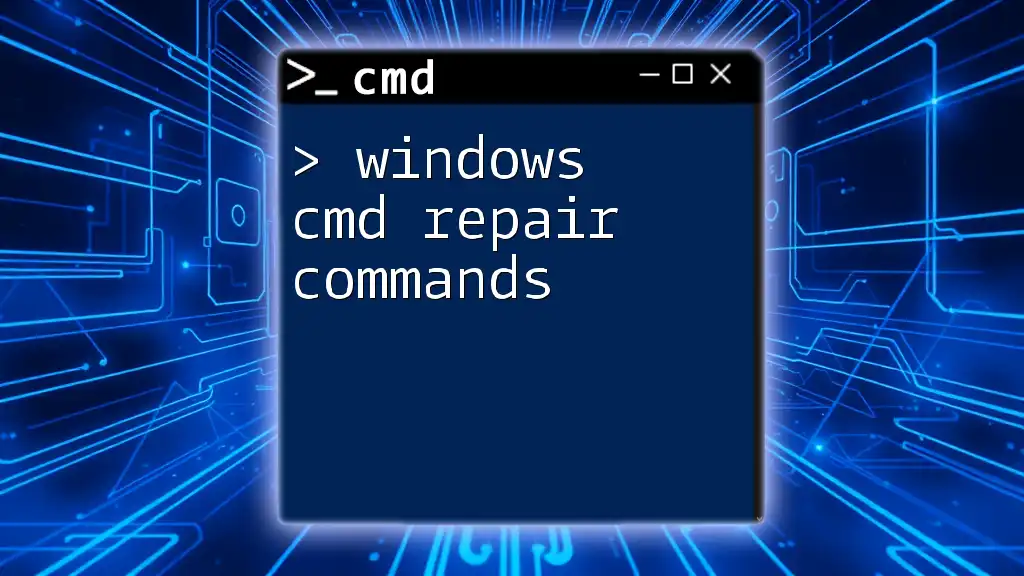
Conclusion
Utilizing the windows app update cmd command can lead to enhanced efficiency in managing and updating applications on your Windows system. Regular updates not only keep your software secure but also ensure that you benefit from the latest features.
Incorporating CMD into your routine for app management provides advanced users the mastery needed to control their systems better. Embrace the power of CMD, and you’ll find your computing experience significantly enhanced.

Additional Resources
For those looking to delve deeper into CMD commands and their applications, consider exploring Microsoft's official documentation, community forums, and other learning platforms dedicated to command-line tools.







